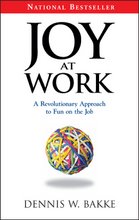The advice process is a very simple, although often controversial, concept. It takes the “suggestion box” management approach of the 1970s and ’80s and turns it upside down. Instead of the boss getting advice and suggestions from people below, the decision maker—who is almost always not an official leader—seeks advice from leaders and from peers.
The advice process is my answer to the age-old organizational dilemma of how to embrace the rights and needs of the individual, while simultaneously ensuring the successful functioning of the team, community, or company. I observed that Japanese companies tended to emphasize the group and consensus, while American culture pushed rugged individualism. I believe the advice process strikes a better balance. It leaves the final decisions to individuals, but it forces them to weigh the needs and wishes of the community. Parenthetically, the Internet was made to order for our advice process. The kind of wide consultations that I advocate would not be possible in large, dispersed organizations were it not for e-mail.
Five important things happen when the advice process is used by an individual before making a decision or taking action:First, it draws the people whose advice is sought into the question at hand. They learn about the issues and become knowledgeable critics or cheerleaders. The sharing of information reinforces the feeling of community. Each person whose advice is sought feels honored and needed.
Second, asking for advice is an act of humility, which is one of the most important characteristics of a fun workplace. The act alone says, “I need you.” The decision maker and the adviser are pushed into a closer relationship. In my experience, this makes it nearly impossible for the decision maker to simply ignore advice.
Third, making decisions is on-the-job education. Advice comes from people who have an understanding of the situation and care about the outcome. No other form of education or training can match this real-time experience.
Fourth, chances of reaching the best decision are greater than under conventional top-down approaches. The decision maker has the advantage of being closer to the issue and will probably be more conversant with the pros and cons than people in more senior positions. What’s more, the decision maker usually has to live with consequences of the decision. Even if the decision maker comes to an issue without fully understanding its implications for the organization, that weakness can be overcome by obtaining advice from senior people. As Samuel Taylor Coleridge wrote: “Advice is like snow; the softer it falls, the longer it dwells upon, and the deeper it sinks into the mind."
Fifth, the process is just plain fun for the decision maker because it mirrors the joy found in playing team sports. The amount of fun in an organization is largely a function of the number of individuals allowed to make decisions. The advice process stimulates initiative and creativity, which are enhanced by wisdom from knowledgeable people elsewhere in the organization. The process (of making decisions) is just plain fun for the decision maker.
Subscribe to:
Post Comments (Atom)


No comments:
Post a Comment